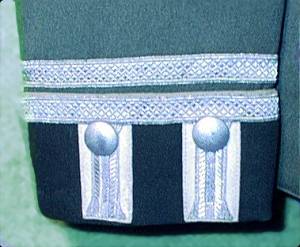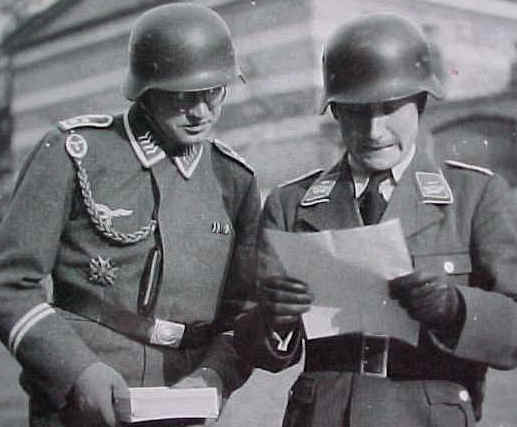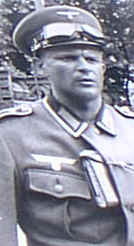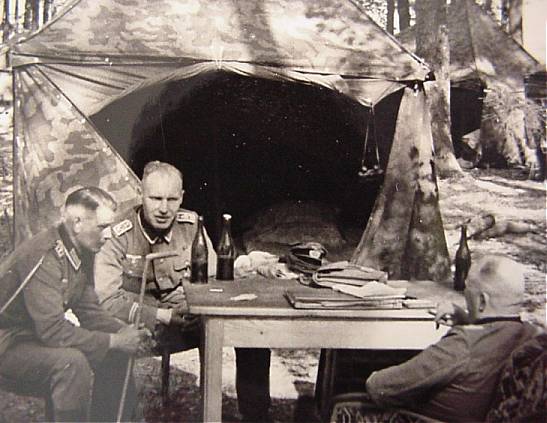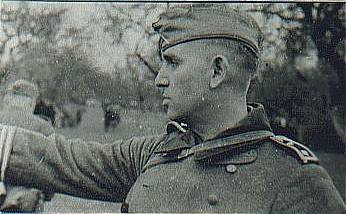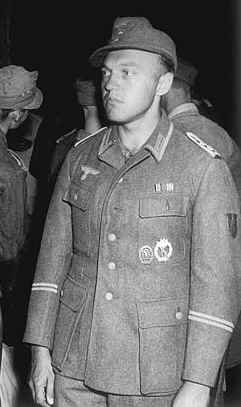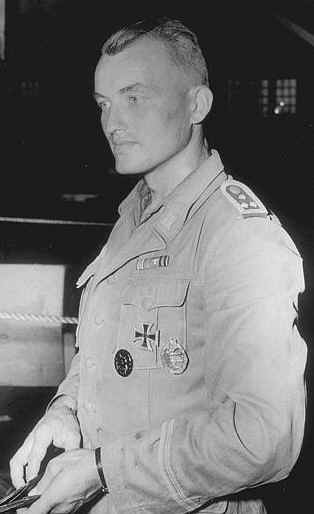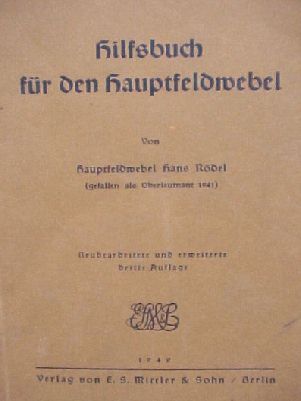| While the typically British appointment of
Regimental Sergeant Major did not have an equivalent in German combat arms units of
battalion size, each company or battery sized subunit did have a soldier appointed Hauptfeldwebel
(in horsed units this was called Hauptwachtmeister). While any NCO
could presumably hold this appointment, it generally went to a soldier holding the rank of
Oberfeldwebel. His duties, similar to his
counterparts in Allied armies (called a Company Sergeant Major in the British and
Commonwealth, and a Company First Sergeant in the US Army), included administrative tasks
necessary to running the company, including personnel and supply issues.
The German soldier had a fondness for nicknames, and the
Hauptfeldwebel acquired several. Informally, he was called "der Spiess"
(The Spear), in homage to the ancient practice of arming NCOs with edged weapons rather
than firearms. Specifically, this related to a time when the senior NCO in a company
was armed with an officer's style sword which for some reason was called a
"spiess." During the Reichsheer period, this position was known as
Oberfeldwebel or Oberwachtmeister, but these titles became rank titles and the position
was renamed Hauptfeldwebel/Hauptwachtmeister. The Hauptfeldwebel was also known,
more informally, as "die Mutter die Kompanie" (Company Mother). |
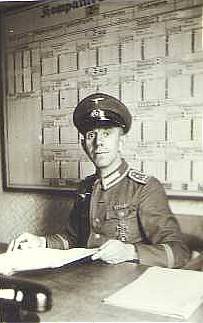
Der Spiess - a Hauptfeldwebel of
Infanterie Regiment 185 in Russia. Note the second button is undone; the Reporting
Pouch is just visible protruding from the tunic front.
|
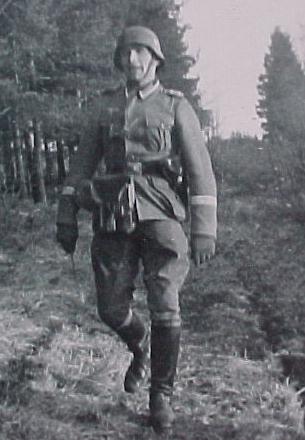 |
The Hauptfeldwebel was not necessarily the
highest ranking soldier in the company. While Oberfeldwebel (or those career NCOs
who made it to Stabsfeldwebel) was the standard rank, it was not a prerequisite and there
is photographic evidence of soldiers ranked as low as Unteroffizier performing the duties
of Hauptfeldwebel. Other NCOs, especially specialists such as the transport
sergeant, may well have been senior in rank or experience to the Hauptfeldwebel, whose
duties were less technical and more oriented to administration and troop leading. The Hauptfeldwebel led the company headquarters and supply troops,
supervising discipline and all work done in the company rear. He also set up a
company writing room, and oversaw all paperwork in the company, including reports,
incoming orders, promotions, inventories, etc. He maintained each company soldier's
Soldbuch, and co-ordinated all incoming messages from home from inquiries by civil
authorities to daily mail deliveries. He maintained the rotation of furloughs and
passes, watched over food supplies (including the Company canteen) and rest facilities for
the company, and when necessary, in the event of a killed or wounded NCO, could also be
called upon to lead a platoon-sized subunit.
Der Spiess - This
Hauptfeldwebel wears riding pants and a map case. |
| As a sign of his status, the uniform of a Hauptfeldwebel
bore two rows of rank braid (tress) around the cuffs; this was seen both on the field
blouse and on the greatcoat. These rows of braid were referred to in slang as Piston
Rings (Kolbenringe). Another visible sign of his office was the Meldetasche
(Reporting Pouch); a black leather case that was carried in the tunic front. In this
case he carried papers, rosters and other information he needed to fulfil his
duties. The pouch had no straps or method of attachment to the uniform; the second
button on the tunic was left undone and the pouch simply thrust in. This pouch was
also worn with the armoured fighting vehicle uniforms (both black and field grey). At right, a Hauptfeldwebel dressed for
walking out - with trousers and black shoes rather than boots. He still
retains his Reporting Pouch. |
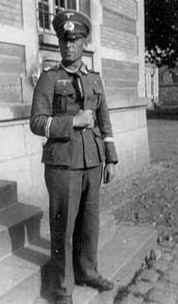
|
|
|



